
Jairo Robinson
Constructing the garden of diverging paths.
Looking upon the totality of Robinson’s nascent work I always wonder: Why is it that a highly skilled painter when it comes to figurative work leans towards a non-representational art form? One answer might be the dissatisfaction with that which was achieved. Another one might be the longing for liberty in favor of a complete creative realization. Let’s see: while in art school, at the National School of Fine Arts of Peru, his works were made up of planes in which objects, silhouettes and recognizable figures were immersed. During the training period in which he had to represent textures, volumes and nudes, Robinson didn’t achieve what he wished for, in spite of the technical effectiveness of his work. He ambitioned more. If he painted skin, he needed to feel the pigment as such, avoiding a photorealistic finish which diminishes the strength of the paint. Once he solved the problems intrinsic to his training, his attention moved on to the application of his abstract-geometric interests into the formal academic principles. In his own words: “To unite my color planes with the academic work”. These attempts are evident in nudes in which the body is treated academically while the geometry of the background remains distant, like a mere compositional element, not integrated into the whole piece, unlike Frantisek Kupka who achieved this in works such as Planes by colors (a.k.a. The great nude) from 1910. After this, Robinson focuses on effectively disentangling that geometry as the central theme of his work, leaving behind the figure. He is, since then, immersed in an abstraction based on small designs that he would then reproduce –as he says- at a 90% level of similarity. It is this fact –basically copying his own work in a different scale- which frustrates him; in the words of the painter: “My work back then was burdensome; I now realize that it lacked spontaneity, fluidity”. Thus, for this exhibition, appropriately titled “Constructions”, Robinson relies on his instinct, on pure creativity in favor of the compositions themselves and not as a result of previous trials. Robinson declares his influences and one can understand which elements he has drawn from each of them, consciously or unconsciously, for his production. In this way it appears evident that from Beatriz Milhazes he gets the preference for a particular geometric shape; from Maria Elena Vieira Da Silva, the hatching; from Regina Aprijaskis the purity of color; from Sabogal, whose work was recently exhibited at the British Peruvian Cultural Center, the heftiness of the texture –keep in mind Robinson had a figurative period; from Sarah Morris, the line defining the color planes. If in the series “Member is an object” and “Forests” using the term abstraction got us closer to Robinson’s proposed line of work, this new “Construction” series deals more with the so called Concrete Art, since the artist does not have reality as a starting point in order to then abstract it and compose a piece, rather, he confronts the canvas from and absolutely mental and emotional standpoint. The square is a shape that does not exist in nature unlike the circle, the triangle and the ellipse. The square, a shape that came about as a mental construction of man, is the leading light of this new series; however, we can say that it is the visible face of the matter that concerns us. The origin of the well balanced and elegant compositions that Robinson shares with us, which have visceral manifestations, are chaotic, even anxious, and from which the order of the piece starts to appear; is a tension between the executioner and the execution, in which we don’t know which of the parts wins. We have already discussed Robinson’s influences, but it is without a doubt that the great melting pot of these painters has its origin in a period of the work of Kasimir Malevitch, a milestone for the history of modern painting. Malevitch, who left in writing that during his youth he believed that his mission as an artist was to represent nature as accurately as possible, took the geometric shapes to their limits in works such as Black square or White on white. However, the Russian artist referred to his works as a “New Realism in Paintings, towards absolute creation” (title of one of his many publications). Malevitch also wrote: “The keys of Suprematism are leading me towards discovering things outside of knowledge. My new paintings don’t belong only to this world”. New Realities. Discovering things outside of knowledge, precisely. What knowledge, what realities does Robinson discover in his compositions? Only he knows, but without a doubt, among the findings is the act of painting in itself, the great matter of painting for the sake of painting. Maybe Emil Nolde understood it that way after painting over and over canvases with views of the ocean from the island where he spent his last days before taking his own life. These canvases, seen today, show us part of the most decided informalism, of the most abstract expressionism. It is said that Nolde realized this and knew what was coming next. It is when an artist starts to understand where his work is going, that it becomes clear that he can’t start walking on a path without necessarily abandoning another one which he might as well have taken. In the natural evolution of Robinson’s work, we can see a canvas hatched with dark lines that to the eyes of the spectator would look like a canvas completely covered in black, and here I am not talking about the light variations on black as in the works of Ad Reinhardt. A climax towards which, painting after painting, the painter will feel closer and closer. Because of this, my intuition tells me that this artist, probably later than sooner, just like Malevitch himself did, will return to the figure as the central object of his production; or at least, he will recognize with certainty the moment in which he would have to choose between going back to try and get a hold of the figure in the way that he always ambitioned or to continue hatching away the path of his own reality
IVÁN FERNÁNDEZ-DÁVILA


























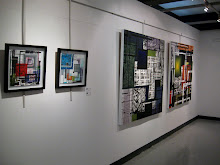
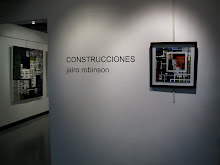
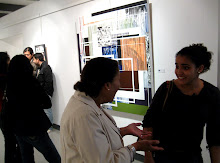
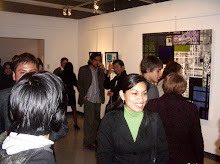
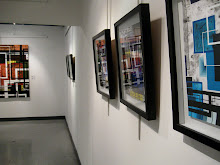
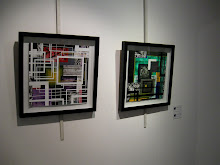

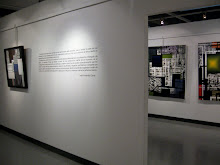


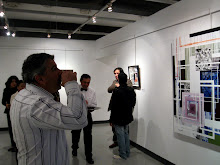
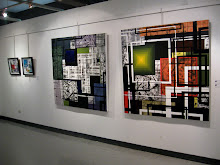
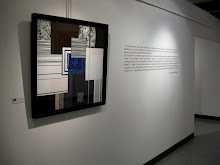
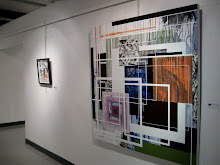

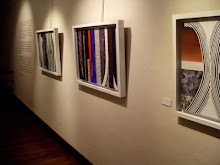
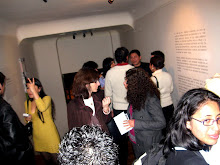
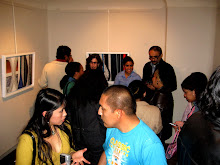
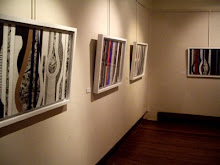

No hay comentarios:
Publicar un comentario